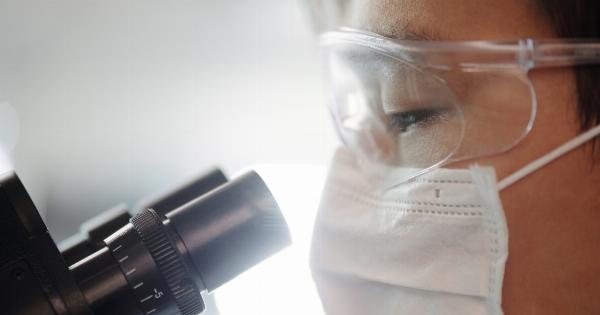Stem cell therapy is an emerging field that has shown immense promise in the treatment of various medical conditions, including common orthopedic ailments.
Stem cells, which are undifferentiated cells that have the ability to differentiate into specialized cell types, have been extensively studied for their regenerative properties. These unique characteristics of stem cells make them an attractive option for orthopedic treatments, as they can potentially repair damaged tissues, promote the regeneration of healthy tissues, and alleviate pain.
Types of Stem Cells Used in Orthopedic Treatments
There are several types of stem cells that can be utilized in orthopedic treatments, each with its own advantages and limitations. The most commonly used stem cells in orthopedics include:.
1. Mesenchymal Stem Cells (MSCs)
Mesenchymal stem cells are multipotent stromal cells that can differentiate into various cell types, including bone, cartilage, and fat cells. MSCs are typically harvested from the patient’s own bone marrow or adipose tissue.
They have shown promising results in the treatment of conditions such as osteoarthritis, tendon injuries, and bone fractures.
2. Embryonic Stem Cells (ESCs)
Embryonic stem cells are derived from embryos and have the potential to differentiate into any cell type in the body. However, the use of ESCs in orthopedic treatments is controversial due to ethical concerns and the risk of tumor formation.
3. Induced Pluripotent Stem Cells (iPSCs)
Induced pluripotent stem cells are adult cells that have been reprogrammed to revert back to an embryonic-like state.
iPSCs have the ability to differentiate into various cell types, making them a potentially valuable tool in orthopedic regenerative therapies. However, more research is needed to fully understand their safety and efficacy.
Conditions Treated with Stem Cell Therapy
Stem cell therapy has shown promising results in the treatment of several common orthopedic ailments. Some of the conditions that can be effectively treated with stem cell therapy include:.
1. Osteoarthritis
Osteoarthritis is a degenerative joint disease characterized by the breakdown of cartilage in the joints.
Stem cell therapy has the potential to regenerate cartilage and slow down the progression of osteoarthritis, providing relief from pain and improving joint function.
2. Tendon and Ligament Injuries
Tendon and ligament injuries are common orthopedic problems that can be challenging to treat. Stem cell therapy offers a promising solution by promoting the regeneration of healthy tendon and ligament tissues, reducing pain, and improving mobility.
3. Bone Fractures
Stem cells can also be utilized in the treatment of bone fractures. By delivering stem cells directly to the site of the fracture, they can stimulate the formation of new bone tissue, accelerate the healing process, and improve overall bone strength.
4. Spinal Disc Degeneration
Spinal disc degeneration is a common cause of back pain and can significantly impact quality of life. Stem cell therapy has shown potential in regenerating damaged spinal discs, reducing pain, and improving spinal function.
Procedure of Stem Cell Therapy
The procedure for stem cell therapy in orthopedics involves several steps:.
1. Harvesting of Stem Cells
Stem cells can be harvested from the patient’s own body (autologous stem cells) or from a donor (allogeneic stem cells). The most common sources of autologous stem cells include bone marrow and adipose tissue.
The cells are extracted using minimally invasive techniques.
2. Cell Isolation and Purification
Once the stem cells are harvested, they need to be isolated and purified to obtain a concentrated population of viable cells. This is typically done using specialized laboratory techniques.
3. Administration of Stem Cells
The purified stem cells are then administered to the patient through the targeted area.
This can be done through direct injection into the affected joint, tendon, or ligament, or through surgical implantation in the case of bone fractures or spinal disc degeneration.
4. Rehabilitation and Follow-up
After the stem cell therapy, patients may undergo a rehabilitation program to optimize the outcomes of the treatment.
Regular follow-up appointments are essential to monitor the progress of the healing process and make any necessary adjustments to the treatment plan.
Potential Benefits and Limitations of Stem Cell Therapy
Stem cell therapy holds immense potential in the field of orthopedics, offering numerous benefits:.
1. Regeneration of Healthy Tissues
Stem cells have the ability to differentiate into specialized cells, allowing them to regenerate damaged tissues and promote the growth of healthy tissues.
2. Minimally Invasive Treatment
Many stem cell therapies are minimally invasive, reducing the risks and complications associated with traditional surgical procedures.
3. Reduced Pain and Improved Function
Stem cell therapy has shown promising results in reducing pain and improving joint function, allowing patients to resume their daily activities with increased comfort and mobility.
Despite the numerous potential benefits, there are some limitations and challenges associated with stem cell therapy:
1. Limited Research and Long-term Safety
Despite the promising results observed in early studies, more long-term research is needed to fully understand the safety and efficacy of stem cell therapies. The potential risks, such as tumor formation, need to be thoroughly evaluated.
2. Cost of Treatment
Stem cell therapy can be costly, especially when multiple treatments are necessary. Insurance coverage for these procedures is limited, making it inaccessible for some patients.
Conclusion
Using stem cells to treat common orthopedic ailments has the potential to revolutionize the field of orthopedics by providing non-invasive and regenerative therapies.
Stem cell therapy offers hope for patients suffering from conditions such as osteoarthritis, tendon and ligament injuries, bone fractures, and spinal disc degeneration. However, further research is needed to fully understand the long-term safety and effectiveness of these treatments.
With ongoing advancements in stem cell research, orthopedic conditions that were once considered difficult to treat may soon have promising therapeutic options.



























